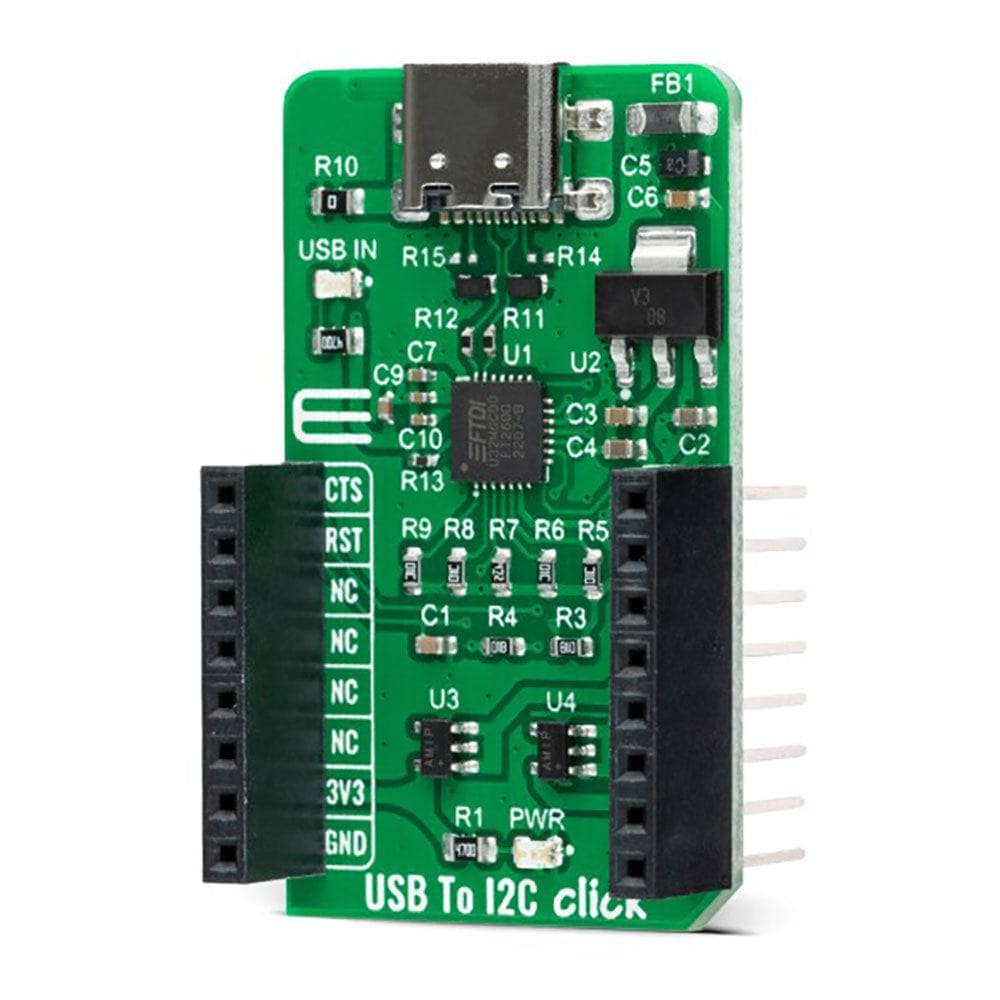
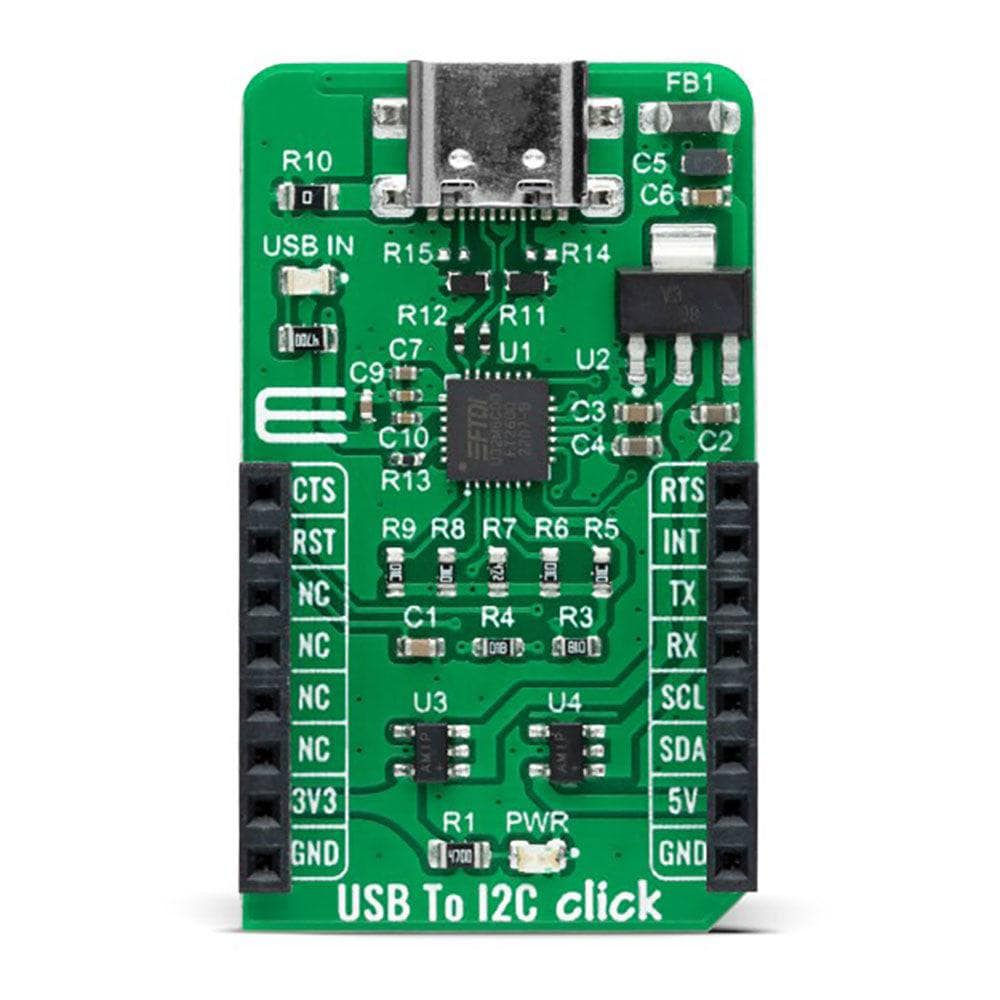
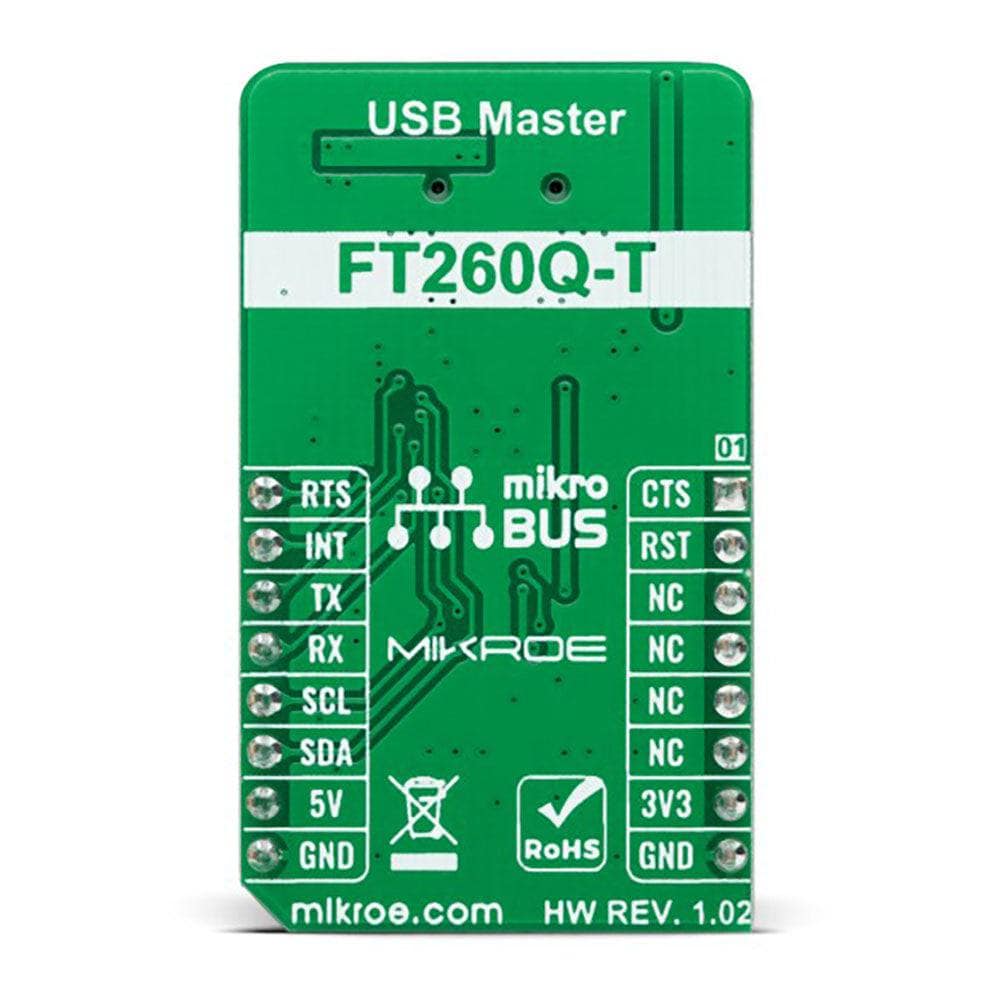
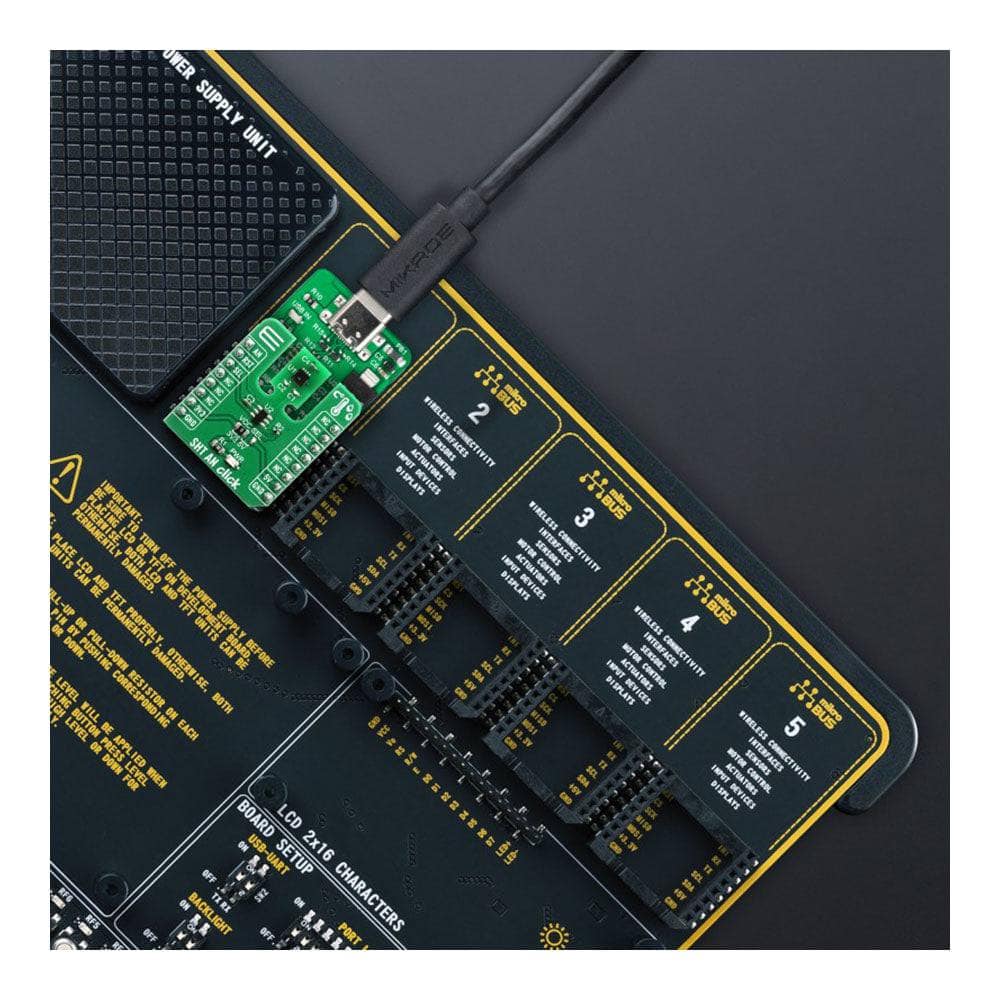
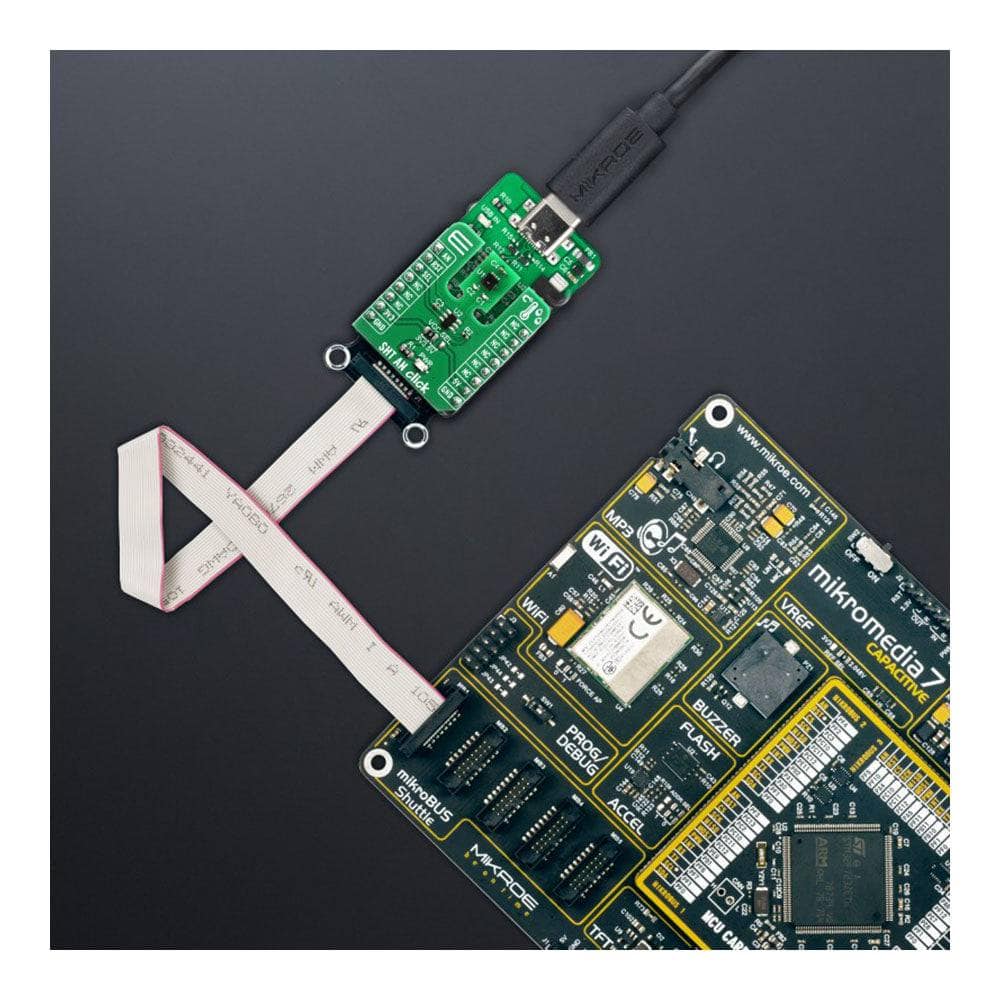
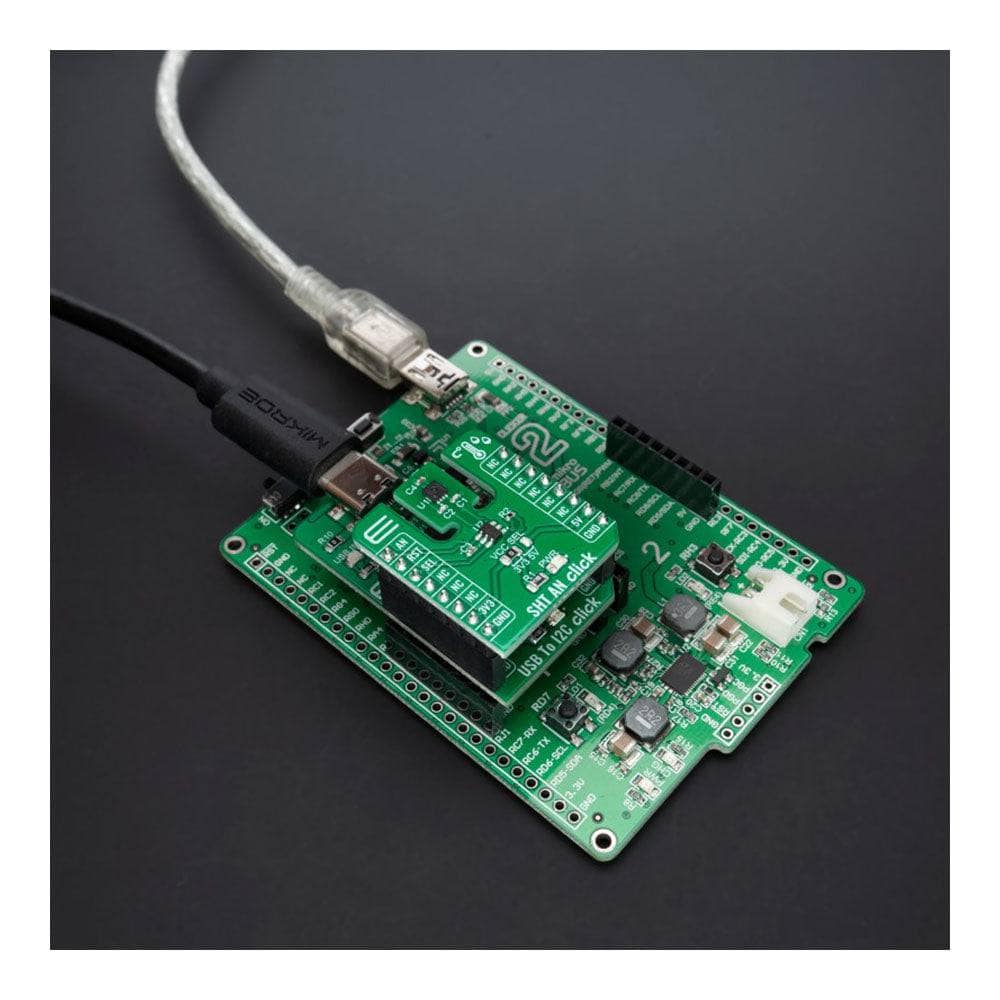
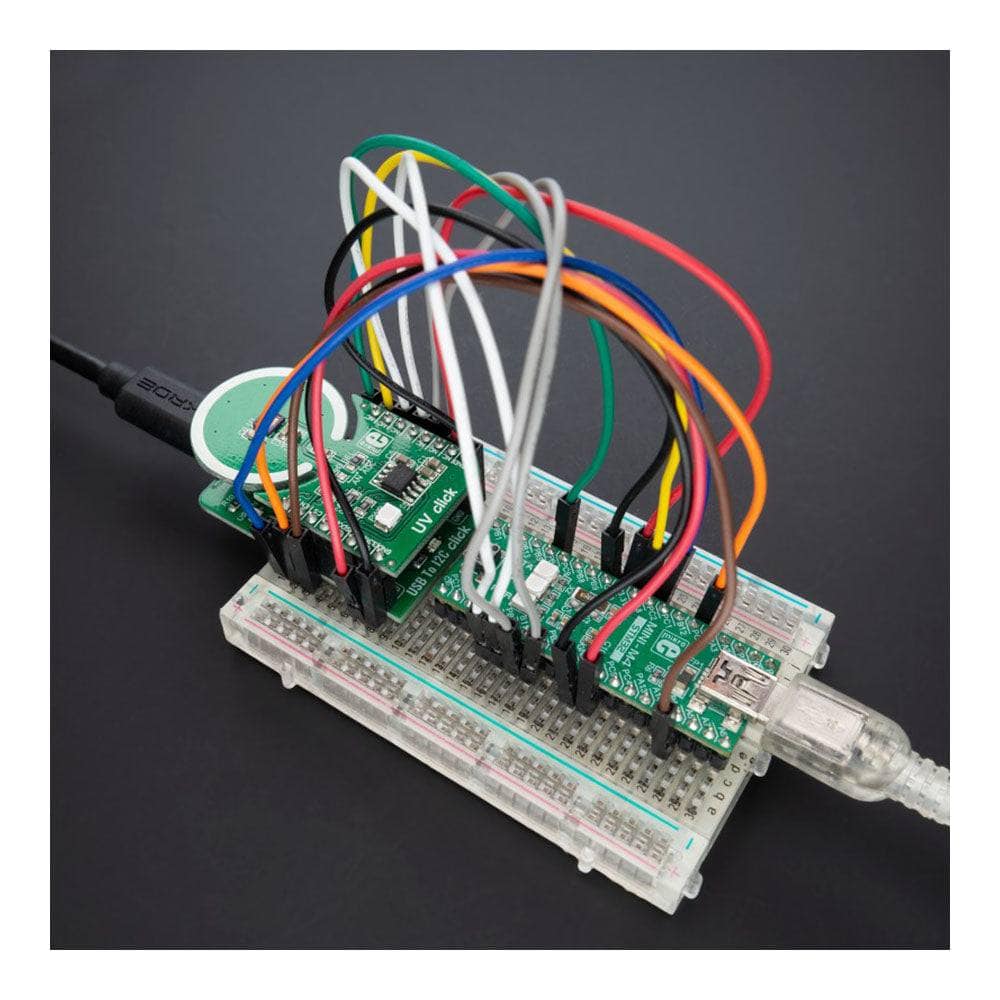
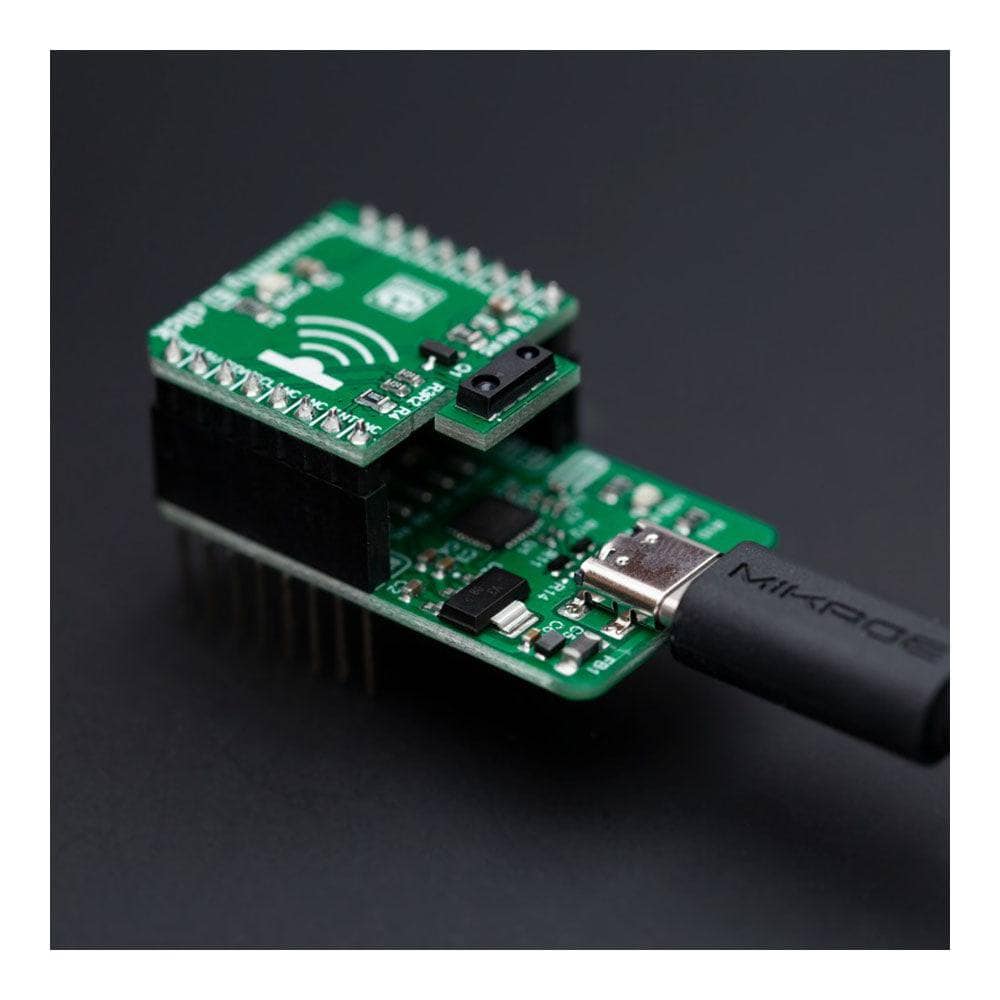
Key Features
Overview
The USB to I2C Click Board™ is a compact add-on board with a general-purpose USB to I2C serial interface. This board features the FT260, an interface device controller that provides a bridge between standard USB Human Interface Device (HID) class drivers and an I2C or UART slave device from FTDI. The FT260 is highly-integrated with a USB 2.0-compliant full-speed (12Mbps) transceiver, oscillator, LDO regulator, and on-chip eFUSE. It is supported by most operating systems where a custom driver is not required. With the possibility of use as a standalone device, this Click board™ provides an ideal, fast-to-implement bridge between USB and either UART or I2C peripherals.
The USB to I2C Click Board™ is supported by a mikroSDK compliant library, which includes functions that simplify software development. This Click board™ comes as a fully tested product, ready to be used on a system equipped with the mikroBUS™ socket.
Downloads
La carte Click Board™ USB vers I2C est une carte complémentaire compacte dotée d'une interface série USB vers I2C à usage général. Cette carte comprend le FT260, un contrôleur de périphérique d'interface qui fournit un pont entre les pilotes de classe USB Human Interface Device (HID) standard et un périphérique esclave I2C ou UART de FTDI. Le FT260 est hautement intégré avec un émetteur-récepteur pleine vitesse (12 Mbps) compatible USB 2.0, un oscillateur, un régulateur LDO et un eFUSE intégré. Il est pris en charge par la plupart des systèmes d'exploitation où un pilote personnalisé n'est pas requis. Avec la possibilité d'être utilisé comme périphérique autonome, cette carte Click™ fournit un pont idéal et rapide à mettre en œuvre entre l'USB et les périphériques UART ou I2C.
La carte Click™ USB vers I2C est prise en charge par une bibliothèque compatible mikroSDK, qui comprend des fonctions qui simplifient le développement logiciel. Cette carte Click™ est livrée sous la forme d'un produit entièrement testé, prêt à être utilisé sur un système équipé de la prise mikroBUS™.
| General Information | |
|---|---|
Part Number (SKU) |
MIKROE-5312
|
Manufacturer |
|
| Physical and Mechanical | |
Weight |
0.02 kg
|
| Other | |
Country of Origin |
|
HS Code Customs Tariff code
|
|
EAN |
8606027387760
|
Warranty |
|
Frequently Asked Questions
Have a Question?
Be the first to ask a question about this.








